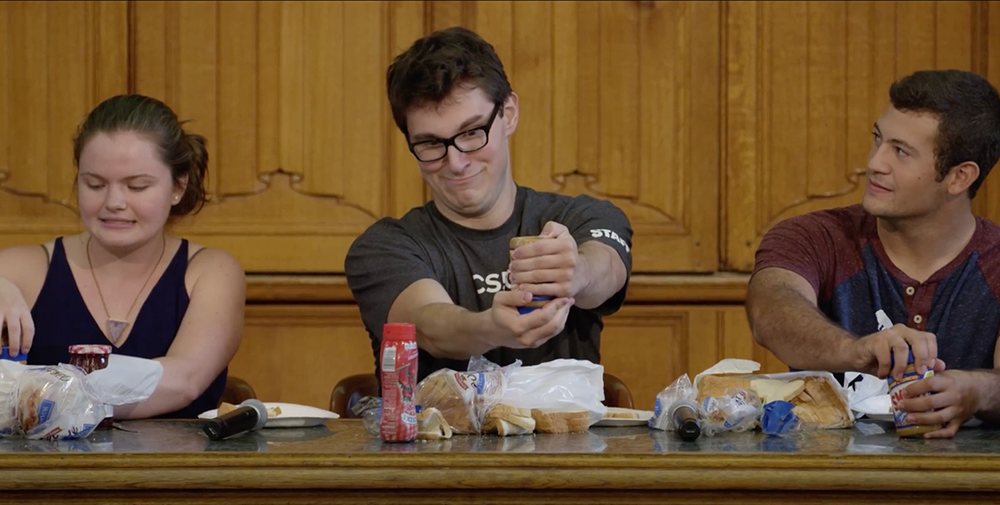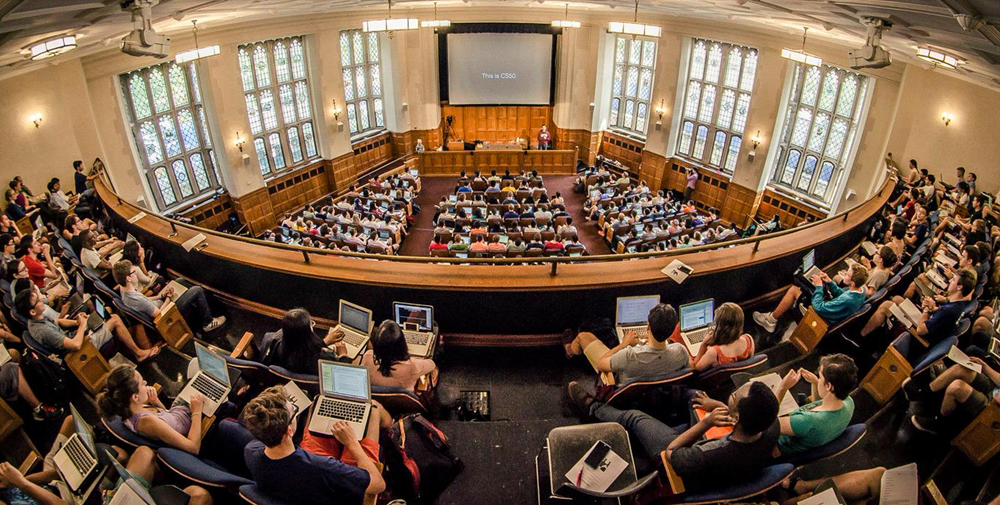Harvard CS50 course in Russian: second lecture appeared

100 thousand views per week
Last week, the first lecture of the Harvard CS50 course was released, localized by JavaRush and Vert Dider Studio. In just a few days, the video gathered 25 thousand views, and the trailer with the announcement of the course has already been viewed by more than 100 thousand people. Obviously, the Russian-speaking community met the initiative to translate lectures with enthusiasm, which certainly inspires translators to continue in the same spirit.
')
Today, June 27, the second Harvard course on the basics of CS50 programming in Russian appeared on the JavaRush website in Russian - javarush.ru/cs50.html
If you have not heard about this course, here is a link to the Habrostaty about him and his path to the Russian-speaking listener.
Lecture 2 (Week 0, Lecture 2): Algorithms and Scratch
This time, the Harvard team of the course went to New Haven, Connecticut to conduct live classes in Yale classrooms. The second introductory lecture, despite the change of location, continues the theme of the first. Namely - algorithms, task algorithms.

Using a simple example, making a peanut butter sandwich David Malan, the CS50 main lecturer together with his assistants demonstrated how important the correct formulation of the problem is and how sometimes it is not easy to choose the desired level of abstraction so that the task is correctly algorithmized.
It was shown that this very algorithmic is the most important for solving a specific problem, language is already a tool: the examples were written in pseudocode, that is, in an “unreal” programming language close to the natural (for humans) language.

David also reminded students of the “Divide and Conquer” algorithm discussed in the previous lecture, a quick search for the desired element among the ordered data. And showed how you can apply a similar principle for other purposes: counting the number of people in the audience. It turns out quickly and efficiently.
In the same lecture, we turn to programming as such. In order not to frighten anyone, the Harvard teachers first of all show the students the visual language of Scratch, the development of their colleagues from the Massachusetts Institute of Technology. Scratch is designed for students, straightforward, but clearly demonstrates the basic concepts necessary for writing applications. You can program simple games, animations and other joys right in your browser, the main thing is to register on the Mit website. And you will see what masterpieces on Scratch were written by students of the past CS50.
So, lecture here: javarush.ru/cs50.html
Article on Habré about the course: habrahabr.ru/company/javarush/blog/303806
Lecture notes and additional materials

Based on the wishes of the course participants, we also translated a brief summary of the lecture and the conditions of the assignments. This week they are considered optional and different from all the others, however, it will be useful for absolute beginners to play with Scratch and learn how to work with the binary number system.
Synopsis with the tasks, explanations and links here .
Next week is no longer introductory, and promises to be very interesting. We will finally take on the C programming language, look at the online development environment (IDE) for solving problems, and learn about the Linux command line.
Follow the announcements and leave your feedback on the course!
vk.com/javarush
www.facebook.com/www.javarush.ru
Source: https://habr.com/ru/post/304218/
All Articles